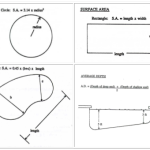Having a beautiful, clear pond can enhance the overall look and feel of your outdoor space. However, dealing with cloudy pond water can be a common issue for pond owners. Cloudy water is often caused by a variety of factors, including algae growth, debris, and poor water circulation. Fortunately, there are several steps you can take to clear up cloudy pond water and restore the natural beauty of your pond.
Credit: shop.naturalwaterscapes.com
1. Identify the Cause of Cloudy Water
The first step in clearing cloudy pond water is to identify the root cause of the issue. Cloudy water can be caused by several factors, including:
- Algae blooms
- Excessive debris
- Poor water circulation
- Imbalanced pH levels
2. Improve Water Circulation
One of the most common reasons for cloudy pond water is poor water circulation. Stagnant water can lead to the buildup of algae and debris, resulting in cloudy water. To improve water circulation, consider adding a fountain, waterfall, or aerator to your pond. These features can help oxygenate the water and prevent algae growth.
3. Remove Debris
Excessive debris, such as leaves, twigs, and dirt, can contribute to cloudy pond water. Regularly remove debris from the surface of the water and the bottom of the pond to prevent buildup. You can use a pond skimmer or a net to remove debris efficiently.

Credit: m.youtube.com
4. Control Algae Growth
Algae blooms are a common cause of cloudy pond water. To control algae growth, consider adding aquatic plants to your pond. Plants can help absorb excess nutrients in the water that algae feed on. Additionally, you can use algaecides or barley straw to combat algae blooms and clear up cloudy water.
5. Test and Adjust pH Levels
Imbalanced pH levels can also contribute to cloudy pond water. Test the pH levels of your pond regularly and make adjustments as needed. The ideal pH level for a pond is typically between 6.5 and 8.0. You can use pH testing kits to monitor and maintain the pH levels of your pond.
6. Perform Regular Water Changes
Performing regular water changes can help improve water quality and clarity in your pond. Remove a portion of the pond water and replace it with fresh, clean water. This can help dilute any excess nutrients or pollutants in the water that may be causing cloudiness.
7. Use a Pond Clarifier
If your pond water remains cloudy despite taking other measures, you can consider using a pond clarifier. Pond clarifiers are chemical treatments that help clear up cloudy water by clumping together fine particles, making it easier for filters to remove them. Follow the instructions carefully when using a pond clarifier to avoid harming aquatic life in your pond.
8. Maintain Your Pond Regularly
Regular maintenance is key to keeping your pond water clear and healthy. Develop a maintenance routine that includes tasks such as cleaning filters, removing debris, and checking water quality. By staying on top of maintenance, you can prevent cloudy water issues from arising in the future.
Conclusion
Clearing up cloudy pond water requires a combination of proper maintenance, water treatment, and addressing underlying issues such as algae growth and poor circulation. By following the steps outlined in this guide, you can improve the clarity of your pond water and create a thriving ecosystem for your aquatic plants and fish. Remember to identify the root cause of cloudiness, take appropriate steps to address it, and maintain your pond regularly to enjoy crystal-clear water year-round.





